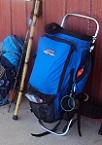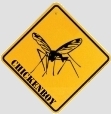BBfanboy
Posts: 18046
Joined: 8/4/2010
From: Winnipeg, MB
Status: offline

|
quote:
ORIGINAL: Alfred
1. There is no tunnel under the Owen Stanleys. I have no idea where this fantasy that there is such a thing first arose. It did not arise in GreyJoy's game v rader.
2. Movement rates across the Owen Stanleys, ie between Port Moresby and Buna, are exactly the same as anywhere else on the map where the same type of terrain is found. Units do not cross as if they were traversing a major road. Again no idea where this fantasy has come from.
3. If the crossing of the Owen Stanleys were in fact at the rate of a major road, that would be a definite bug to be fixed by michaelm. No other action, such as forcing players to move in combat mode, or restrictions on units able to cross, would be appropriate.
4. Andy Mac has already, from the very beginning of AE's life, had a jungle TOE which Commonwealth units change over to. If someone wants to argue that Andy Mac got it wrong, I'm all ears but I very much doubt that they will be able to successfully prosecute that argument.
5. Is the argument that a non historical, special "light jungle" TOE template required? Putting aside the basic premise that Andy Mac got it wrong, all TOE templates are based on the historical unit structures. I don't see the need, nor the wisdom in the overall context of the game, in introducing a "fantasy" TOE template which is optional at the player's discretion. No other TOE is an optional detour from the preset path.
6. The terrain between Port Moresby and Buna did not preclude the historical movement of some artillery tubes throughout its entire length. If the Japanese could do it, why can't the player?
7. I find it amazing that anyone is comfortable with the idea of forcing their opponent, whether it be the Japanese re Port Moresby or the Allies re Buna, to undertake only a sea borne invasion of those locations. The Own Stanleys were historically crossed in both directions by both sides. It is not a one way thoroughfare. The Japanese came very close to Port Moresby and if there had been no simultaneous Guadalcanal campaign which severely impacted on the limited Japanese logistical capabilities, who is to say they would not have captured Port Moresby overland. The Allies definitely captured Buna with an overland campaign. So where is this justification that either location should only be captured from the sea?
Alfred
Thanks for clearing that up Alfred! I do recall reading comments that the movement rate was borked there, but that was before the last major release in early 2012, so either it got fixed or someone was exaggerating!
In the book I read on the New Guinea campaign I am fairly sure that Buna was taken in a two-pronged assualt: the Australians coming overland [partly supported by some paradropped supplies] and the US troops making an amphib landing just down the coast from Buna and marching a few miles to the base.
The book also makes it clear that PM had been reinforced by the Allies after the Coral Sea battle and the Japanese forces from Buna would not have been enough to take it. After the Coral Sea battle made a landing directly at PM too risky, the Japanese landed somewhere near Milne Bay and tried to march up the coast. However, newly arrived allied aircraft attacked them and their supply shipping, paralyzing their progress. And as Alfred said, the battle for Guadalcanal ate up a lot of the support they might have gotten for NG. I can't recall if the Japanese withdrew from the Milne Bay area before or after the US landings near Buna.
At any rate, the only issue with the OS mountains passability seems to be with the size of the equipment that the game allows to pass over it. Other than a house rule of sorts, it seems the answer is to accept how it is modeled and let both players use it when they can. The key is always going to be air superiority and greater troop numbers whether delivered overland or by amphib landing [or both] anyway.
_____________________________
No matter how bad a situation is, you can always make it worse. - Chris Hadfield : An Astronaut's Guide To Life On Earth
|
 Printable Version
Printable Version

 .
. 


















 New Messages
New Messages No New Messages
No New Messages Hot Topic w/ New Messages
Hot Topic w/ New Messages Hot Topic w/o New Messages
Hot Topic w/o New Messages Locked w/ New Messages
Locked w/ New Messages Locked w/o New Messages
Locked w/o New Messages Post New Thread
Post New Thread